New York Times HQ Visit and Emergence of Influencer Culture
On my latest trip to New York City, in May 2010, Sean and I attend Creative Week to scope out the venue for our next event, meet VC Fred Wilson, and visit the New York Times skyscraper.
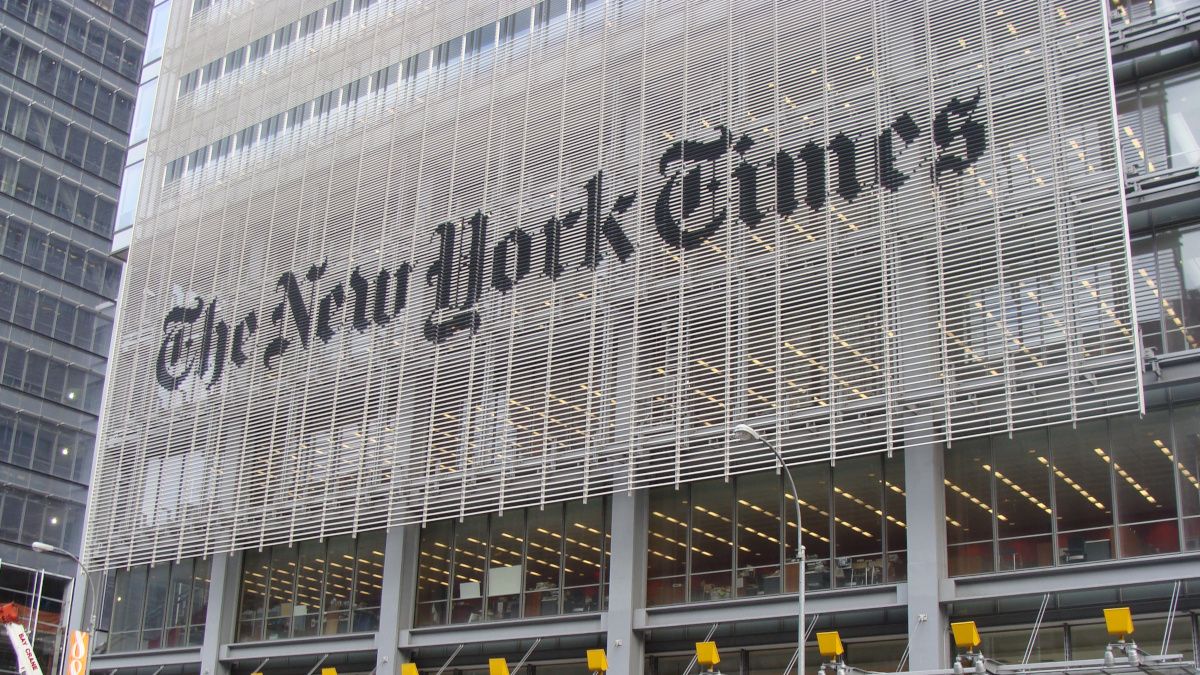
I think Sean was more excited to meet Fred Wilson than I was. As a wannabe VC, he was in awe of Fred and had tried (unsuccessfully) to interview him for the ReadWriteTalk podcast. I certainly knew about Fred and subscribed to his blog in Google Reader, but it felt like we lived in different neighborhoods of the blogosphere. We only rarely ran into each other, virtually speaking—one of us would comment on the other’s blog occasionally, but that was it.
If I’d been one of the first professional tech bloggers, Fred had pioneered the art of VC blogging. He religiously blogged every day on AVC.com and had a loyal, business-focused audience who hung on his every word. He’d been an investor in Feedburner before it was sold to Google, but ironically he didn’t use an RSS reader. In that respect, he was an unusual ambassador for the read/write web, since he published to the web but didn’t subscribe to other bloggers. I knew that RWW was on his blogroll, however, along with the likes of TechCrunch and Business Insider—so I guessed he probably visited our website every now and then to check the news. But I didn’t get the sense that Fred knew much about me personally, as a fellow blogger.

I’d been introduced to Fred over email by (who else?) Alex Iskold, and we’d arranged to meet him in his Union Square Ventures office at 915 Broadway, between Twentieth and Twenty-First. By coincidence, Sean and I had bumped into him earlier that day in a Manhattan café. So when we entered his fourteenth-floor office at 3:00 p.m. on Tuesday, it was our second encounter.
Fred was about my height and had short dark brown hair, styled almost in a bowl cut. Despite the boyish hair, he was exactly ten years older than me and so was forty-eight when we met. He wore a sky-blue-striped shirt and black blazer over a pair of designer jeans. But the thing I remember most about him that day were his eyes, which were pale blue but had a penetrating look that I found psychologically intimidating. This effect was enhanced by the deep rings under his eyes, which suggested a businessman who worked long hours and didn’t have time to suffer fools.
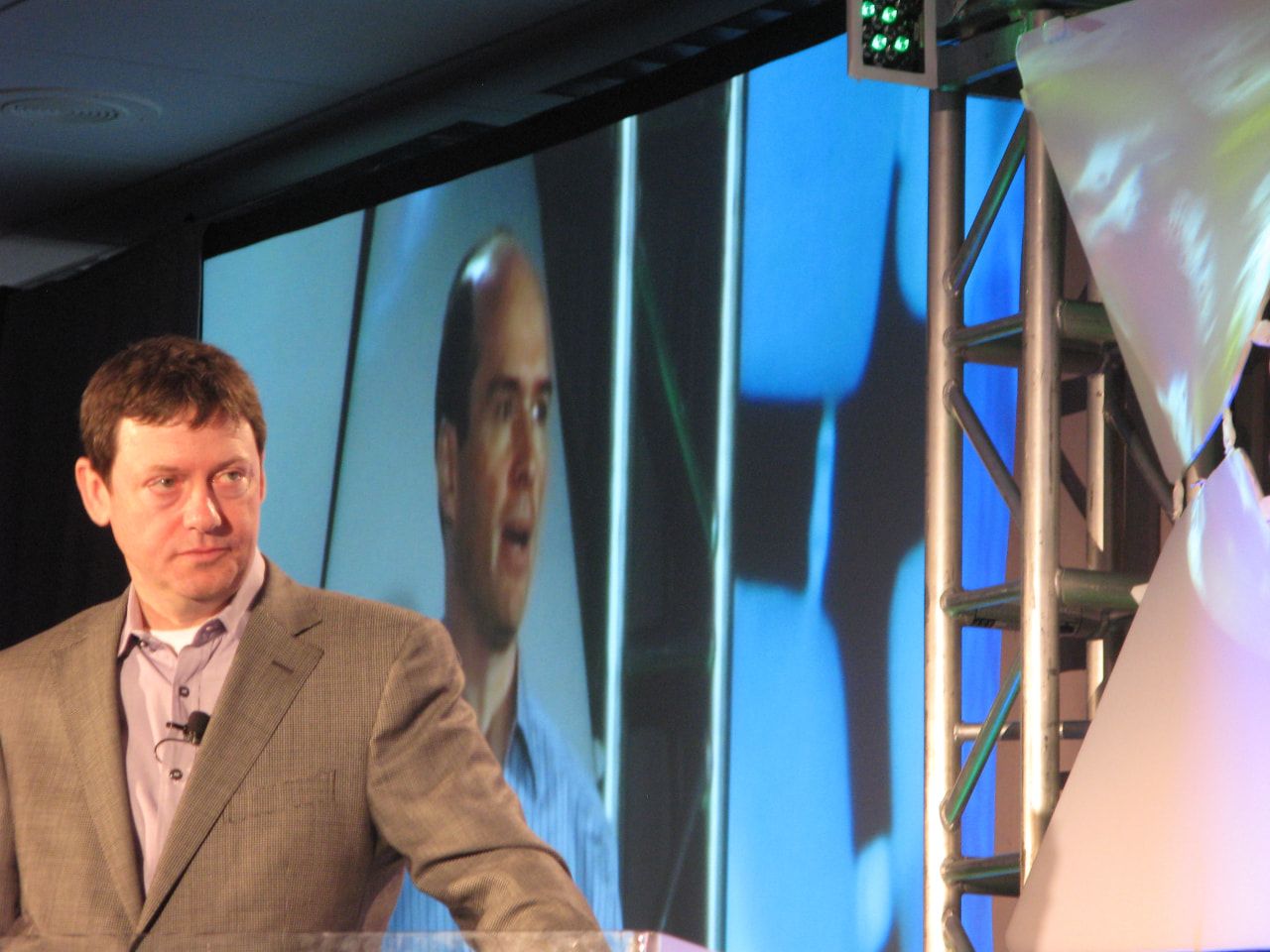
After we’d sat down, he immediately peppered me with questions about RWW. One reason for our meeting was to discuss the possibility of getting funded, but he quickly nixed that—he wasn’t interested in investing in media, he said, as it wouldn’t scale enough. I’d already heard that line from other investors, so it wasn’t a surprise. Still, I was beginning to feel uncomfortable at all the questions about RWW and how we did business. It wasn’t the usual, easy conversation I had with other bloggers—it felt more like I was interviewing for a job (and what’s more, a job I couldn’t get). My face was getting flushed under Fred’s relentless gaze and rapid-fire questions, so I was grateful when Sean took over the explanation of our revenue model.
It was good to meet Fred, but I didn’t come away from that meeting thinking I’d made a new friend. Most of the time when I met other bloggers, we’d make a lasting connection. But I doubted that Fred would even remember my name the next time we met.
Later that day, Sean and I had a somewhat more relaxing meeting with Kaliya Hamlin to discuss our upcoming unconference. We met at the Heartland Brewery in Union Square and had a good discussion about event logistics. Since this was our third event with Kaliya, there weren’t any surprises and we trusted that she had everything covered.
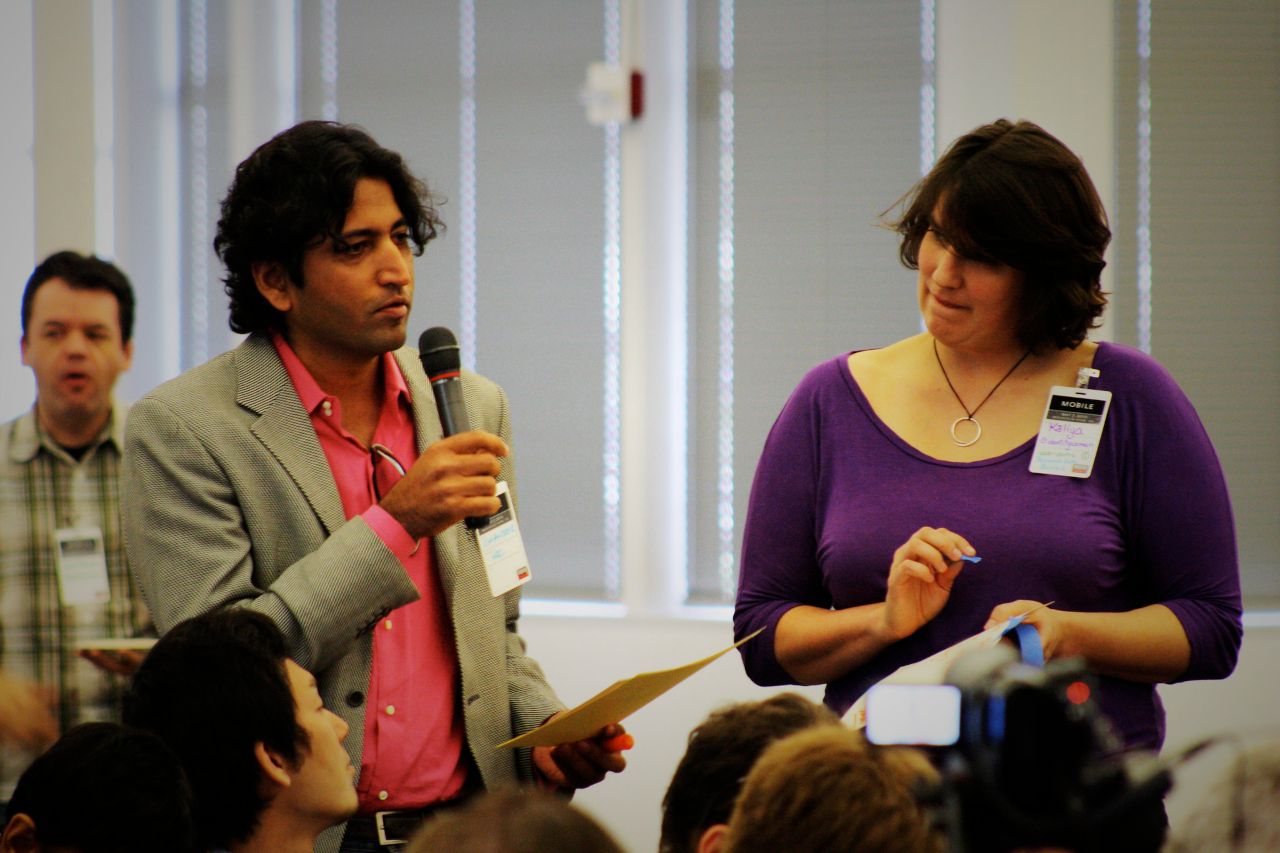
As we talked about how our event would unfold, I supped my beer and gazed up at the brewhouse that was a part of the pub building. It was encased behind glass and apparently wasn’t currently active, but you could see all the old brewing equipment. Suddenly, something caught my eye on one of the horizontal pipes near the top of the brewhouse. As I looked closer, I realized it was a massive brown rat. It scurried along the pipe and then disappeared again into the darkness. I looked at Sean, whose eyes were now the size of plates—he too had spotted the rat! Kaliya was unaware and was still talking about the unconference, so we had to interrupt her to tell her about our sighting. Just as well we didn’t order food here, I joked.
By this point in the day, I was feeling tired and a bit homesick. I was also wondering if I still had a relationship with Elyssa. That morning, I’d bought her an iPad at the Manhattan Apple Store. The first iPad had only just been released in the States the month before, so it wasn’t yet available in New Zealand. I forwarded her the email receipt, along with a winky message: “Does this mean you’ll start talking to me again?” I wasn’t holding out much hope for a positive response.
I eventually read her reply when I got back to our Airbnb. Her email made it clear that she was breaking up with me. In truth, I was somewhat relieved to be free of all the personal drama. But I was also sad that this had happened while I was traveling. I told Sean about the breakup, adding that I was sorry for the extra pressure the relationship had put on him—my mixing business with pleasure. He commiserated with me and said that he understood why Elyssa and I had connected in the first place. It must’ve been nice to find someone who understood what you do for a living, he suggested. I just nodded.
Creative Week and Influencer Culture
After another near-sleepless night in Brooklyn, Sean and I made our way back into Manhattan to attend Creative Week, an event that catered to the creative industries. The venue was a fourth-floor gallery called the Metropolitan Pavilion, which was located on 123 West Eighteenth Street. This building would be the headquarters of Internet Week in June, a New York tech festival that we’d timed our event to coincide with. Internet Week had only begun in 2008, but I’d been assured it was already popular.

Our event would be held in that same gallery, so today was a good chance for Sean and me to scope it out. What immediately stood out to me was how white and shiny everything was. The room itself was rectangular and L-shaped, so it didn’t feel as spacious as the large-in-all-directions Computer History Museum room we’d had for our first two events. Multiple large pillars throughout seemed to further constrain the space. But, overall, it had a modern commercial feel, with its high-gloss epoxy resin floor, high ceilings, and exposed HVAC ducts. All of this was painted white—even the chairs.
The day seemed to fly by, despite the content not being to my taste—it was much more focused on marketing than on the arts. Sean and I helped moderate one of the sessions, about messaging etiquette for online marketers on social networks. In the other sessions, I sat back and took notes on how marketers were using the social-web tools that we wrote about every day on RWW. I learned that many of them followed blogs like ours in order to track trends; this was useful knowledge as we continued to broaden our audience beyond developers and entrepreneurs.
By this time—May 2010—the social web was well and truly entrenched in the culture. A recent Pew Research report had found that, for the first time, more than half of Americans now used a social network.

There were also signs that Facebook and other platforms were starting to wield a bit too much power. Later in the month, Marshall posted that Facebook was rolling back some of the controversial changes it had been making to the site’s privacy settings. Facebook had made public posting the default in December, but some of its users objected to certain bits of information no longer being private. By May, Facebook had been forced to backtrack a little.
“Users are now allowed to hide their friends list and their list of interest pages from the public at large,” Marshall reported. Privacy issues would continue to be a problem for Facebook in the coming years.

Despite these teething problems, at Creative Week I was interested to learn about how the social web was increasingly being used by marketers. Apparently they liked to “follow the thought leaders in various tools,” so that they could get in on new trends at the “embryo of ideas.” Another phrase I jotted down was “footprint of influence.”
Looking back on it, this was a time when influencer culture was just beginning to blossom on the internet. What would turn out to be the key influencer platform, Instagram, had yet to be launched. But by that May, some bloggers and YouTube users were using these platforms to market products and starting to cross-pollinate their content across social media services like Facebook and Twitter. But blogs were still at the center of the social web at this time—even on YouTube, the emerging influencers were known as “vloggers.” Nobody back then knew that social media would completely take over during the rest of the 2010s.
A Visit to the New York Times
If I’d unknowingly gotten a taste of the new new media on Wednesday, the following day we got to visit the apex of old media: the headquarters of the New York Times. I’d arranged a meeting with Vindu Goel, the person mainly responsible for syndicating our blog on the technology section of the New York Times website. Vindu had invited several other Times employees to sit down with Sean and me, including the current deputy technology editors, Suzanne Spector and Kevin McKenna.
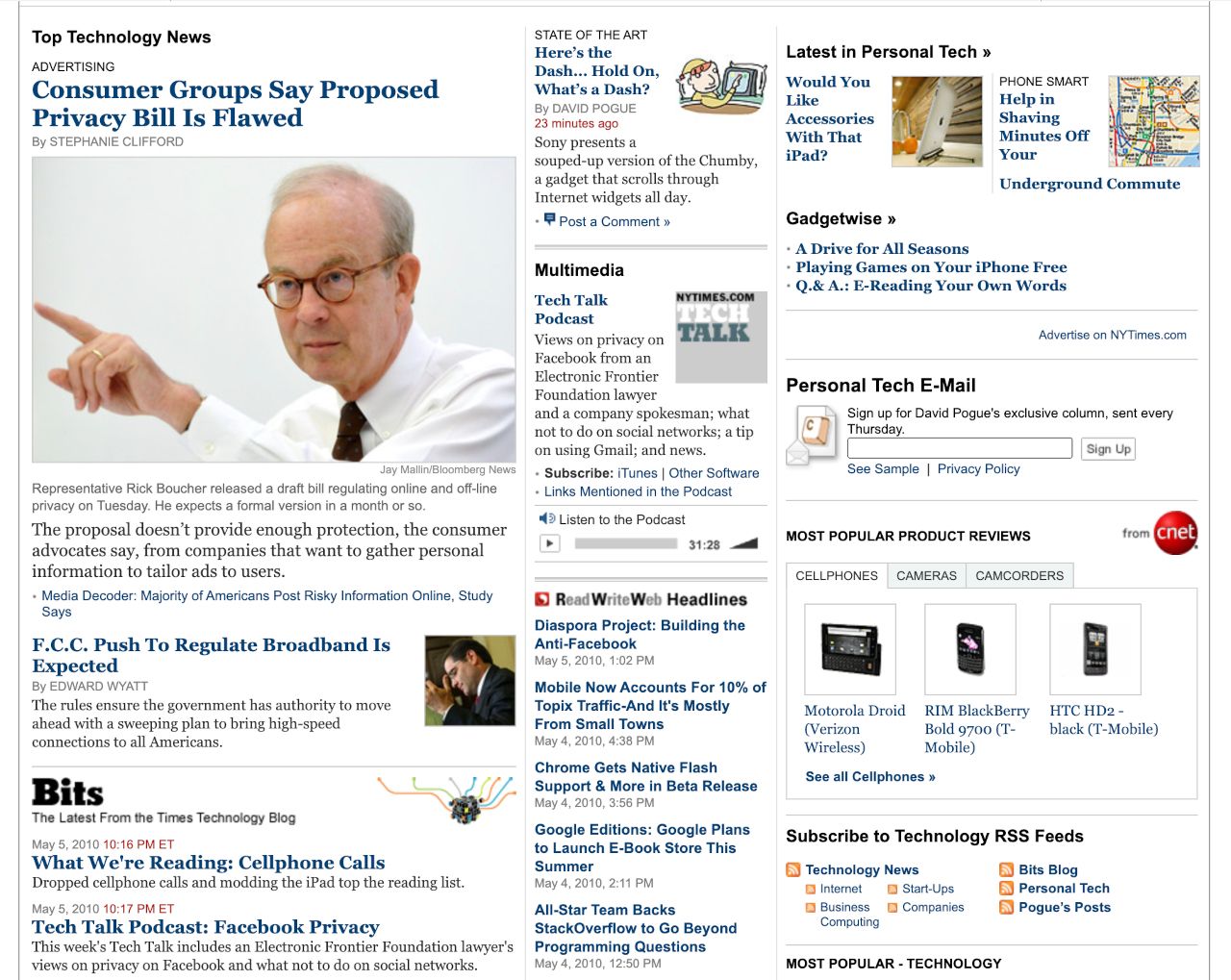
I still couldn’t quite believe that the RWW logo was on display every day on the technology front page of the New York Times website. What’s more, it was currently “above the fold”—the first of the three tech-blog logos to show, above both GigaOm and VentureBeat (you had to scroll down to see those two). The Times had its own technology “blog,” Bits, and it was ably led by Nick Bilton, but it was still mostly business focused. You’d see stories about IBM earnings reports, smartphone patent lawsuits, Facebook privacy, iPad sales updates, and so on. They needed RWW and the other tech blogs for our focus on cutting-edge internet technology.
Also, this was about ten months before the Times instituted its paywall, so everything on its website—including the tech front page—was freely available to all web users. We were getting maximum exposure on the hallowed digital pages of the New York Times, not to mention the continued bragging rights of telling non-tech people, including my family and real-world friends, that my blog was syndicated on the New York Fucking Times!
The New York Times Building was relatively new, having only opened in November 2007. It was a fifty-two-story skyscraper at 620 Eighth Avenue, between Fortieth and Forty-First Streets, and was then the fourth-tallest building in New York , behind the Empire State Building, Bank of America Tower, and Chrysler Building. The building certainly was impressive on the outside, with a curtain wall consisting of 186,000 ceramic rods and a giant New York Times logo stenciled in black over the top. Inside, the structure had an “inner wall” of floor-to-ceiling glass and a large lobby looking out onto an unlikely garden of fifty-foot-tall birch trees.
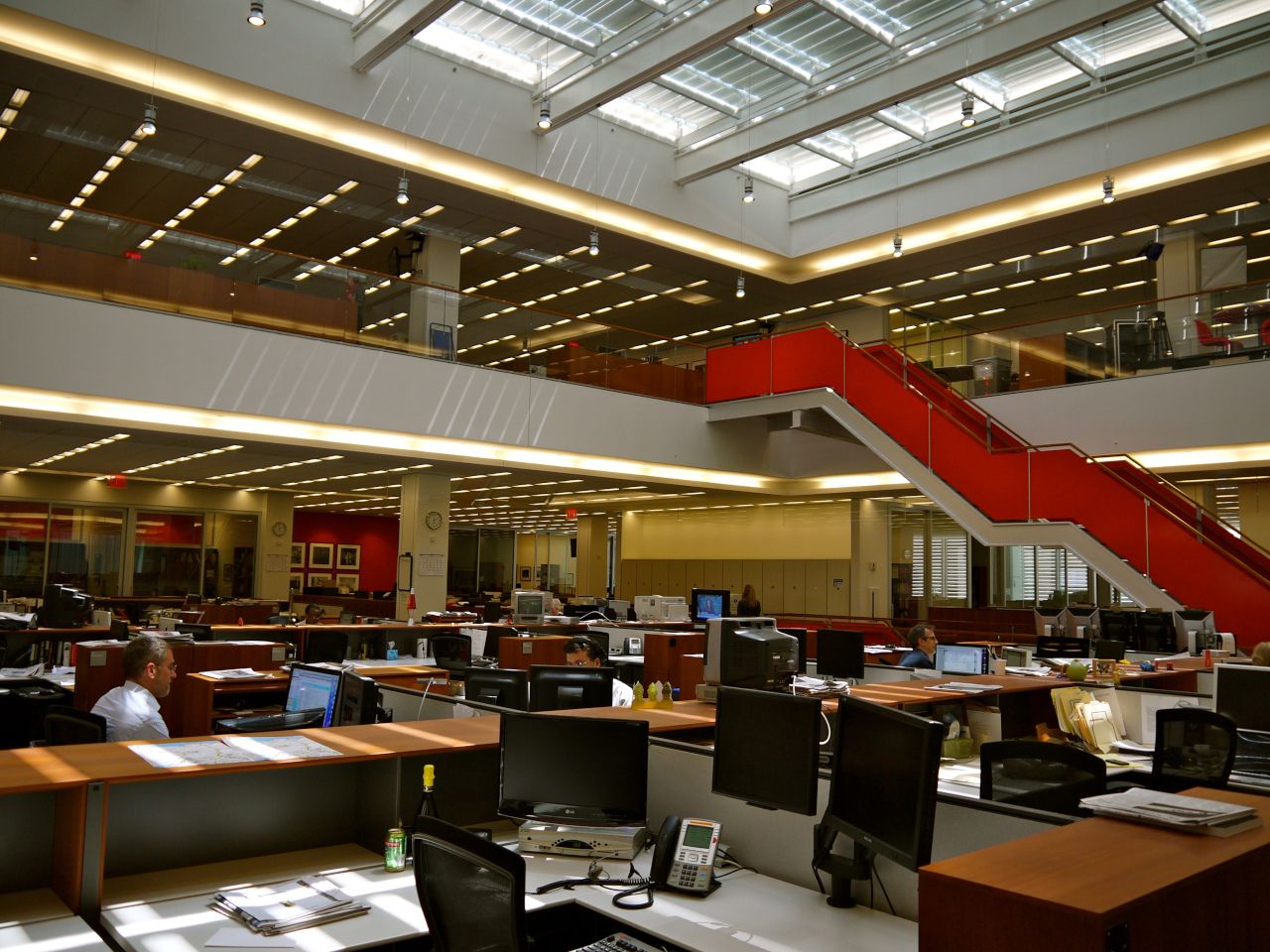
The Times occupied the first twenty-eight floors of the building. After Vindu came down to meet us in the lobby, he took us on a quick tour of the newsroom on the bottom three floors. This large, open-plan, multifloor room was surprisingly quiet. It was around noon, and what few staff were on the main floor were either tapping away silently on their computers or having hushed conversations in small groupings. The immense hubbub usually depicted in newsrooms on television shows or in the movies was not evident here. In fact, many of the staff I observed seemed oblivious to their coworkers.
We then took the elevator up to one of the anonymous floors above, and this felt more like a typical office area—rows of cubicles amid a bland decor dominated by greys, whites, and browns. We met the others in a small, windowless meeting room and we began talking about what types of stories they preferred from RWW. They liked smart analysis posts, the deputy editors told me (check!), but they were particularly looking for enterprise and business topics (er, okay). I was a little disappointed to hear that, since the Bits blog seemed to cover business topics sufficiently well. The value of syndicating RWW, I thought, was that we gave a glimpse into the next big thing on the consumer internet.
As the meeting went on, it became clear that I was from a different world to these well-mannered, grey-haired editors. They weren’t necessarily interested in the next hot startup; instead they wanted “smart, advice-y” articles on topics like “what Windows 7 means for the enterprise.” Stifling a yawn, I promised to send more posts from our ReadWriteEnterprise channel.
I realized then that this is why blogs like mine had broken through in the mainstream-media ecosystem—we were at the cutting edge of emerging internet culture, getting our hands dirty on the streets of the open web. Traditional mainstream media were still stuck in their skyscraper offices, apparently not even venturing down to their newsroom that much anymore. We were the leaders in internet culture; they were the followers. The only thing that gave me pause in this admittedly self-serving analysis was the gleaming curtain-wall exterior of the building. It proved that this company had the resources to throw at tech news—if it wanted to. I wondered how long it would be before they stopped syndicating small upstart blogs like ours and did everything in-house instead.

The following day I began the long journey back to New Zealand. I would be back in New York in less than a month, so I didn’t have a lot of time to settle into my newly single life. But I already had a plan that I wanted to implement: buy a house and reestablish a home base for myself. I was still renting my small, shabby townhouse (Elyssa called it “the hovel”), but I’d flagged to Sean that I would soon be making a capital withdrawal from the company bank accounts, which would allow me to put a deposit down on a proper house. It would become RWW’s new international headquarters, I joked.
Lead image: The New York Times Building; photo by Dawn Comford Wilcox.
This post is part of my serialized book, Bubble Blog: From Outsider to Insider in Silicon Valley's Web 2.0 Revolution. View table of contents.
Next up: 051. Filter Bubbles and the RWW Real-Time Web Summit, NYC, 2010
Buy the Book
My Web 2.0 memoir, Bubble Blog: From Outsider to Insider in Silicon Valley's Web 2.0 Revolution, is now available to purchase:
- Paperback, US$19.99: Amazon; Bookshop.org
- eBook, US$9.99: Amazon Kindle Store; Apple Books; Google Play
Or search for "Bubble Blog MacManus" on your local online bookstore.